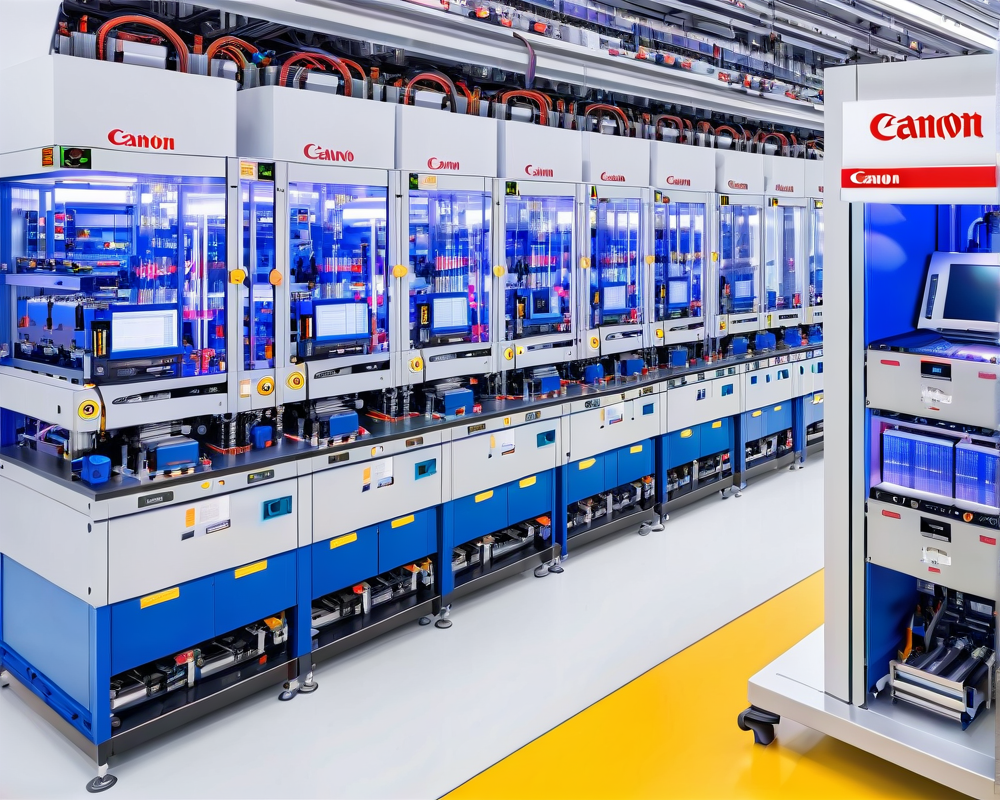Canon Unveils Game-Changer in Semiconductor Production with Innovative Nanoimprint Lithography System
Canon’s Bold Step in Semiconductor Innovation
On Friday, October 13, Canon made waves by introducing an innovative nanoimprint lithography system aimed at taking on the semiconductor giants. This new technology is set to revolutionize semiconductor manufacturing, and it’s about time—because in the high-speed tech race, staying still means getting left behind faster than you can say ‘chip shortage.’
A Response to ASML’s Dominance
The new system from Canon, dubbed the FPA-1200NZ2C, marks a strategic counter to ASML, the Dutch powerhouse that’s been steering the EUV lithography lane like a Formula 1 driver. Their extreme ultraviolet lithography machines are crucial for semiconductor production, especially for the latest chips powering everything from smartphones to supercomputers. Think of it as the tech equivalent of the Space Race, where oh-so-slightly faster innovations can lead to significant market shifts.
The Semiconductor Tug of War
As if the competition among tech companies wasn’t juicy enough, add geopolitical tensions to the mix. The U.S. has been throwing regulatory sharp turns at China to block access to cutting-edge chips and machinery. With new sanctions practically blocking off access, Chinese tech firms might as well bring out the popcorn and watch the spectacle unfold—after all, nothing says ‘collaboration’ like a good old trade war.
What’s So Special About This New Machine?
Canon’s new FPA-1200NZ2C isn’t just waving a placard that says “we’re in the game”—it’s making big claims. Capable of producing semiconductors compatible with a jaw-dropping 2nm process, it leaves Apple’s A17 Pro chip—strutting its 3nm features—looking a bit holographic in comparison. To give you an idea, features measured in nanometers refer to the size on the chip. The smaller your nanometer, the more features you can fit, leading to better performance. It’s like cramming more and more people in a tiny elevator—nobody’s winning at that.
Global Implications and the Road Ahead
But Canon isn’t without its challenges. The Dutch government has already curtailed ASML’s ability to send EUV machines to China, ensuring that no more than a few mechanical birds have flown south for the winter. On the flip side, as Canon steps up to the plate, they might also find themselves facing scrutiny from every corner, including the U.S. administration, which doesn’t seem keen on letting any loopholes slip by—especially when it involves slippery chip deals in Shenzhen’s Huaqiangbei.
Conclusion: The Chips Are Down
As we watch this semiconductor saga unfold, we can’t help but ponder: will Canon’s innovation be the key to leveling the playing field? Or will it merely end up being a new toy in a very dangerous tech sandbox? Stay tuned, because in the world of chips, anything can happen—and often does!




